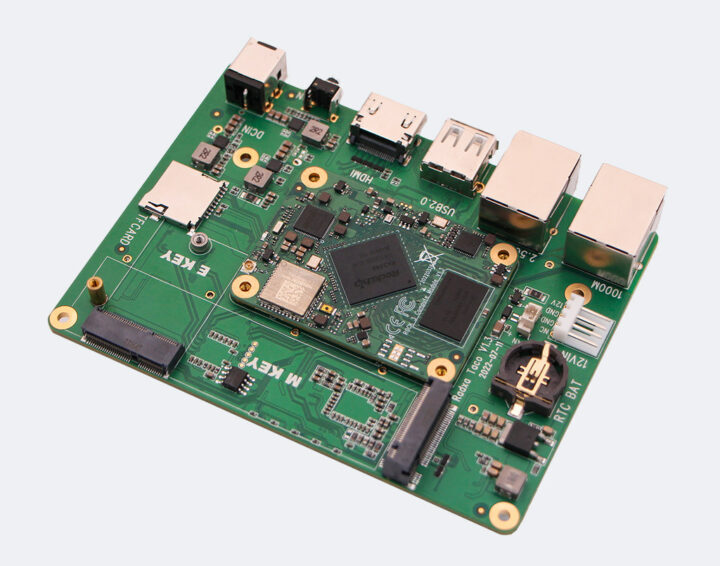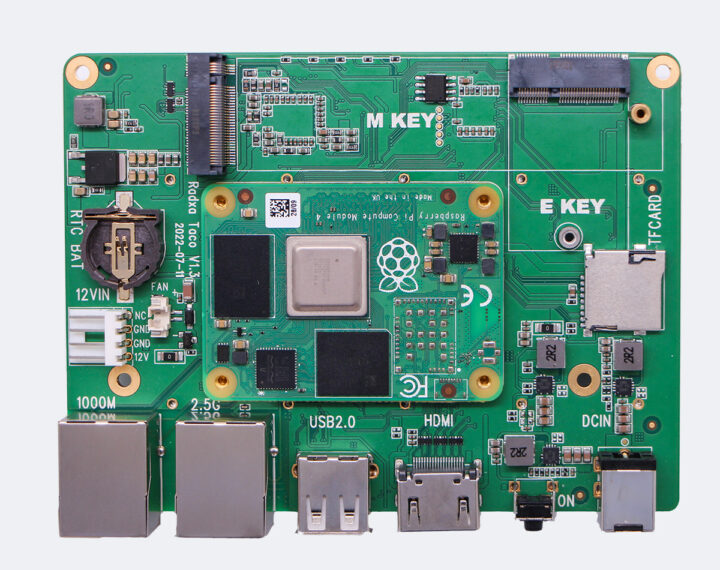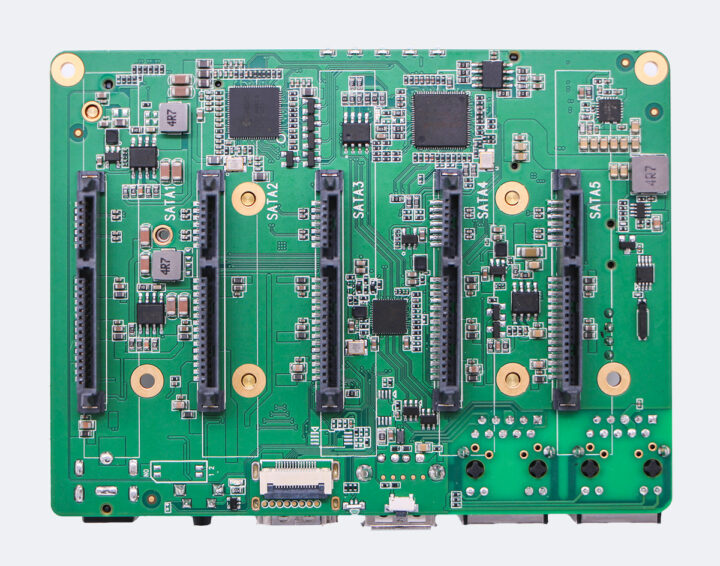The Radxa Taco is a carrier board for Raspberry Pi CM4 and compatible system-on-modules that is designed for NAS applications with five SATA ports for 2.5-inch or 3.5-inch drives, 2.5GbE and GbE networking, M.2 sockets for expansion, and more.
The new board is the successor of the Rock Pi SATA HAT designed for the Raspberry Pi 4 SBC or Raxda Rock Pi 4 single board computers and supports more SATA drives, M.2 NVMe storage, optional WiFi 6, built-in RTC support, and so on.
Radxa Taco specifications:
- Supported SoMs
- Raspberry Pi CM4 or CM4 Lite
- Radxa CM3 based on Rockchip RK3566 quad-core Cortex-A55 processor
- Maybe others
- Storage
- 5x SATA interfaces for 2.5-inch HDD or SSD up to 15mm thick, support for 3.5-inch drive via cables, software RAID 0/1/5
- 1x M.2 M Key 2280 socket for NVMe SSD
- MicroSD card slot
- Networking
- 2.5GbE RJ45 port
- Gigabit Ethernet RJ45 port
- Optional WiFi 6 module via M.2 E Key socket
- PCIe – High-speed PCIe switch for SATA & Ethernet
- USB – 1x USB 2.0 port for USB Direct Access Mode from PC
- Expansion
- M.2 M Key for NVMe SSD
- M.2 E Key for WiFi 6 modules or Google Coral AI module
- Misc
- 5x activity LEDs
- User and MaskROM keys
- PWM-controlled fan for heat dispatching
- OLED display for system info such as IP address or storage usage
- Power Supply
- 12V DC power input for 2.5 and 3.5″ HDD (60W power supply needed for 5x 2.5-inch drives)
- External standard ATX power supply support for 3.5-inch HDDs
- HDD suspend mode support
- Power Consumption
- SSD – <3W
- 2.5-inch HDD – 3 to 5W
- 3.5-inch HDD – 5 to 10W
- Dimensions – 110 x 85 mm
While in theory, both the Raspberry Pi CM4 and Radxa CM3 modules are supported, the wiki only provides instructions for the Raspberry Pi system-on-module. You’d basically have to flash the Raspberry Pi OS image to the module, and you’d be good to go, although there’s also a script to control the PWM fan:
|
1 |
curl -sL https://rock.sh/get-taco | sudo -E bash |
One known issue is that booting from the M.2 NVMe SSD is not supported because there is no driver for the PCIe switch in the Raspberry Pi bootloader.

The carrier board is currently sold on Allnet China for $95. You’d need to add a Raspberry Pi CM4 (if you can’t source one), the power supply, and of course the drives.

Jean-Luc started CNX Software in 2010 as a part-time endeavor, before quitting his job as a software engineering manager, and starting to write daily news, and reviews full time later in 2011.
Support CNX Software! Donate via cryptocurrencies, become a Patron on Patreon, or purchase goods on Amazon or Aliexpress






